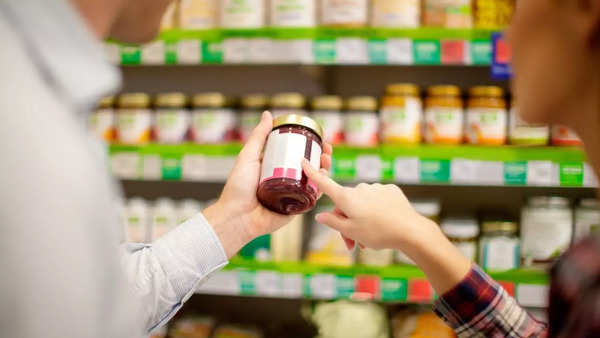In a historic move, The United States has for the first time in 30 years taken a big step towards redefining what constitutes “healthy” foods, removing items like white bread from the list, and adding nutritious options like eggs and salmon. The move has come amid concerns of a deluge of chronic lifestyle diseases, threatening to affect people’s longevity and quality of life in the coming years.
The Food and Drug Administration (FDA) said it is introducing a new symbol to help manufacturers quickly convey to consumers that a food meets the “healthy” criteria.
“The ‘healthy’ claim can empower consumers by providing a quick signal on food package labels to help consumers identify foundational foods for building healthy dietary patterns. The claim could be especially helpful for those who may be less familiar with nutritional information,” read the new food rules.

Senior FDA official Jim Jones informed reporters that diet-related diseases, including heart disease, cancer and diabetes, are the leading cause of disability and disease in the United States and contribute to America’s status having the lowest life expectancy amongst large high-income countries
Americans aren’t eating right and this reflects in the concerning figures that reveal the eating patterns of people. Around 77 percent of Americans exceed recommendations for saturated fat intake, 63 percent are surpassing limits for added sugars, and an unbelievable 90 percent are eating way too much sodium. When it comes to eating healthy, nearly 80 percent are not having the required dairy, fruits, and vegetables.
“The healthy claim has been updated to help ensure that consumers have access to more complete, accurate and up-to-date nutrition information on food labels,” added Jones.
Which foods are labelled as “healthy” under the new rules

For a food product to make the healthy claim, it has to meet the nutritional requirements elucidated by the Dietary Guidelines for Americans, and the updated Nutrition Facts label. The new requirements include declaration of added sugars and necessitates inclusion of foods that make for a balanced diet.
Here’s what a food product should have to claim the “healthy” title as per the new guidelines;
– It should have a certain amount of food (food group equivalent) from at least one of the food groups or subgroups (such as fruits, vegetables, fat-free and low-fat dairy etc.) recommended by the Dietary Guidelines.
– It should adhere to specified limits for the following nutrients: saturated fat, sodium, and added sugars. For instance, to include the “healthy” claim on the package, a cereal needs to contain a certain amount of whole grains and adhere to limits for saturated fat, sodium, and added sugars.
– Nuts, seeds, higher-fat fish like salmon, certain oils, and water are examples of foods that were previously excluded from the “healthy” label but are now recognized as key components of a healthy eating pattern, as recommended by the Dietary Guidelines. These foods are now eligible to carry the “healthy” claim.
– Many foods that fit into a range of budgets such as some peanut butters and canned fruits and vegetables also qualify to be in the bracket.
Manufacturers who choose to use the “healthy” claim have three years to conform but can use the new criteria sooner.
How “healthy” has changed over the years
Healthy fats IN: When the original rules were introduced in the 90s, the focus was on lowering all fat, while in today’s times, it is to reduce saturated fats while acknowledging the benefits of healthy fats. This means avocados, nuts, seeds, high-fat fish, eggs, and olive oil now qualify as “healthy.”

Breakfast cereals, sugary fruit snacks OUT: Sugary fruit snacks, heavily sweetened snack bars, fortified breakfast cereals, and yoghurt or fruit punch high in added sugars which were earlier categorised “healthy” no longer make the cut.
The FDA has yet to mention a timeline for when the symbol will be ready.
(Images courtesy: iStock)

